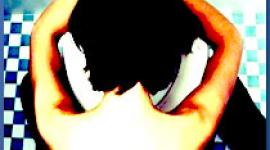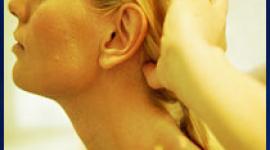Eating Disorders: Muscle Dysmorphia in Men
Pumped-Up Physically/Deflated Emotionally: The Heartbreak of Muscle Dysmorphia
 Muscularity is "in" today; pick up a magazine or turn on your television, and images of densely-muscled demi-gods with astoundingly broad shoulders and massive biceps are presented as the ultimate in masculinity.
Muscularity is "in" today; pick up a magazine or turn on your television, and images of densely-muscled demi-gods with astoundingly broad shoulders and massive biceps are presented as the ultimate in masculinity.
Of course, many men (and women) are focused on eating "right" and getting sufficient exercise to enhance their physical and emotional well-being. Understandably, they also appreciate the byproduct of these efforts in the form of a toned if not robustly-healthy appearance.
For some men, however, their focus on muscularity goes much too far, taking time and attention away from other pursuits and leaving these men chronically dissatisfied with their size and appearance.
In the August 2000 issue of the American Journal of Psychiatry, Roberto Olivardia, Harrison G. Pope, Jr., and James I. Hudson from McLean Hospital present the first case-control study of this phenomenon, which they have labeled "muscle dysmorphia."
Two Varieties of Muscle-Mindedness
Olivardia and colleagues characterize muscle dysmorphia as a chronic preoccupation with the belief that one is not sufficiently muscular. This preoccupation results in marked subjective distress, serious impairment in social and occupational functioning and, for some, use of anabolic-androgenic steroids to facilitate muscle growth, risking adverse medical and psychiatric consequences.
In this study, 24 men with muscle dysmorphia were compared on a variety of psychiatric, physical, and demographic measures with 30 weightlifters who did not meet criteria for this condition (i.e., spending more than 30 minutes daily preoccupied with thoughts that they were too small or insufficiently muscular; avoiding social situations for fear of appearing too small or refusing to appear shirtless in public; and giving up enjoyable activities as a result of this preoccupation). In addition to comparisons between these two groups, the authors conducted a post-study comparison involving these two groups and 25 college men with and 25 college men without eating disorders who were evaluated with virtually identical instruments in an earlier study.
Is Muscle Dysmorphia a Distinct Disorder?
Interestingly, the authors found important differences between the dysmorphic and non-dysmorphic groups on measures of body dissatisfaction, eating attitudes, the use of anabolic steroids, and lifetime prevalence of DSM-IV diagnosable disorders involving anxiety (29% of the dysmorphic group vs. 3% of the non-dysmorphic group), mood (58% vs. 20%), and eating (29% vs. 0%). The onset of these DSM-IV disorders occurred both before and after the development of muscle dysmorphia, suggesting that the latter disorder is distinct from these others but likely rooted in the same underlying genetic or environmental factors that predispose individuals to their development.
And yet, while there may be important experiences from childhood and family life that contribute to this phenomenon, there were few differences between the dysmorphic and non-dysmorphic groups on measures of family history, physical and/or sexual abuse in childhood, and sexual orientation and behavior.
From a phenomenological standpoint, these researchers found that muscle dysmorphia appears quite similar to the eating disorders. In their post-study comparison, they found that men with muscle dysmorphia resembled men with eating disorders in many respects, while the normal weightlifters resembled men without eating disorders. Olivardia, Pope, and Hudson conclude that there are striking parallels between the pursuit of "bigness" and the pursuit of thinness, both with regard to psychological make-up as well as their emergence as a response to sociocultural pressures concerning appearance.
The authors further conclude that muscle dysmorphia is a distinct and valid diagnostic entity. It is not yet clear, however, whether muscle dysmorphia is part of the obsessive-compulsive disorder spectrum (as are the other forms of body dysmorphia) or more closely related to affective disorders. This classification question is important in so far as treatment recommendations are concerned, since this disorder would likely respond to those treatments effective for the disorders to which this one is related (e.g., cognitive-behavioral therapy for anxiety disorders; antidepressant medications and therapy for depressive disorders).
Source: Olivardia, R., Pope, H.G. Jr., & Hudson, J.I. (2000). Muscle dysmorphia in male weightlifters: A case-control study. American Journal of Psychiatry, 157(8), 1291-1296.
next: American Academy of Pediatrics: Identifying and Treating Eating Disorders
~ eating disorders library
~ all articles on eating disorders
APA Reference
Staff, H.
(2008, December 21). Eating Disorders: Muscle Dysmorphia in Men, HealthyPlace. Retrieved
on 2026, January 14 from https://www.healthyplace.com/eating-disorders/articles/eating-disorders-muscle-dysmorphia-in-men



